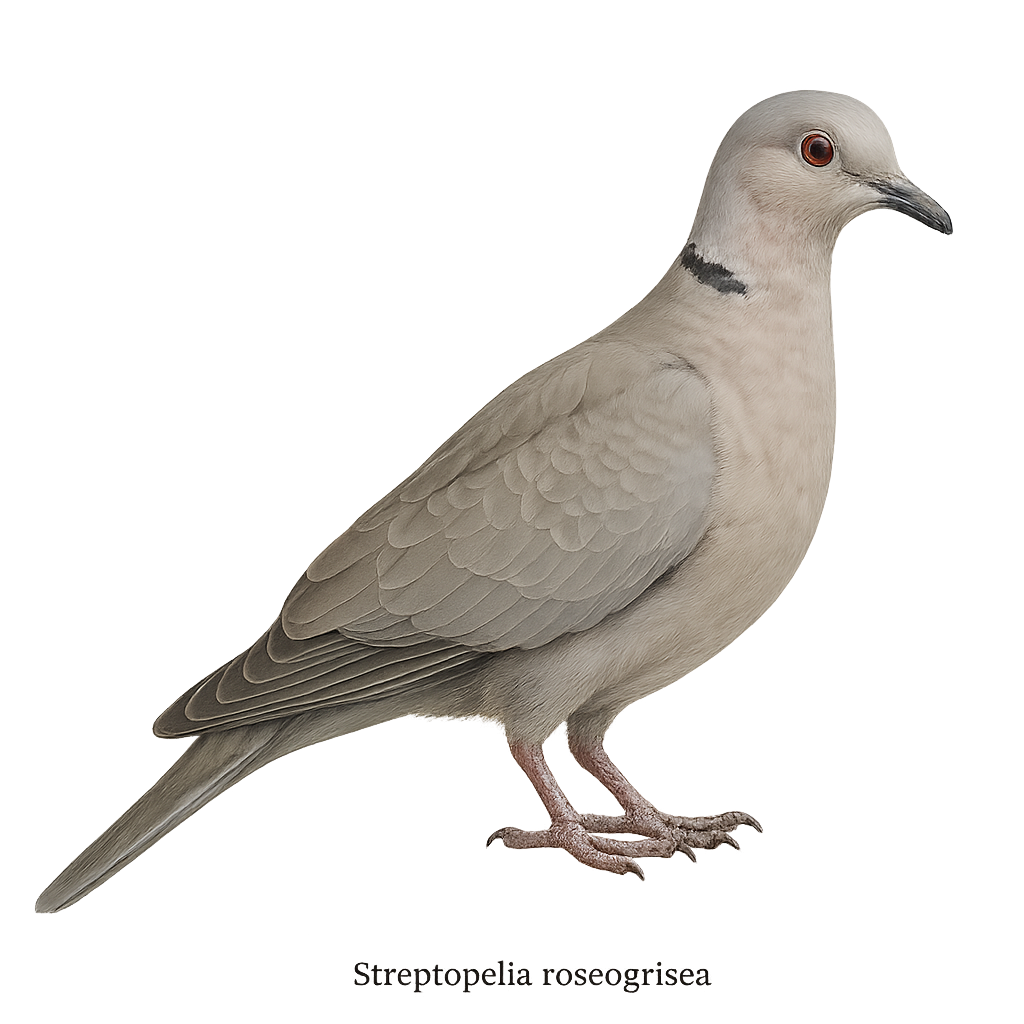Your wildlife photography guide.
Explore the african collared dove in detail, study its behavior, prepare your shots.
Where to observe and photograph the african collared dove in the wild
Learn where and when to spot the african collared dove in the wild, how to identify the species based on distinctive features, and what natural environments it inhabits. The WildlifePhotographer app offers tailored photography tips that reflect the african collared dove’s behavior, helping you capture better wildlife images. Explore the full species profile for key information including description, habitat, active periods, and approach techniques.
African Collared Dove
Scientific name: Streptopelia roseogrisea

IUCN Status: Least Concern
Family: COLUMBIDAE
Group: Birds
Sensitivity to human approach: Tolerant
Minimum approach distance: 10 m
Courtship display: March to May
Incubation: 14-16 jours
Hatchings: March to June
Habitat:
savannas, arid zones, sparse forests
Activity period :
Primarily active during the day, with peak activity in the morning and late afternoon.
Identification and description:
The African Collared Dove, or Streptopelia roseogrisea, is an elegant and graceful bird, often mistaken for the domestic dove. It features delicate plumage, primarily pinkish-grey, with darker shades on the wings and a distinctive black band around the neck. This bird is particularly appreciated for its soft and melodious song. Native to the arid regions of sub-Saharan Africa, it adapts well to semi-arid environments and savannas. It is often seen in pairs or small groups, feeding mainly on seeds and small insects. Although generally discreet, it can be spotted near water sources, especially at sunrise and sunset.
Recommended lens:
400 mm – adjust based on distance, desired framing (portrait or habitat), and approach conditions.
Photography tips:
To photograph the African Collared Dove, focus on the golden hours of morning or evening when the light is soft and flattering. Use a telephoto lens of at least 400mm to capture precise details without disturbing the bird. Be patient and discreet, approaching slowly to avoid startling it. Look for natural backgrounds that highlight its delicate plumage. If possible, capture it singing or drinking, which will add a lively dimension to your shots.
The WildlifePhotographer App is coming soon!
Be the first to explore the best nature spots, track rutting seasons, log your observations, and observe more wildlife.
Already 1 432 wildlife lovers subscribed worldwide

